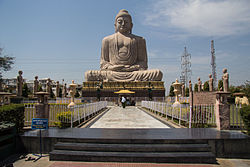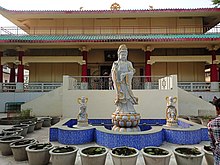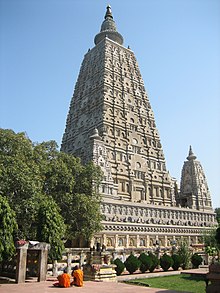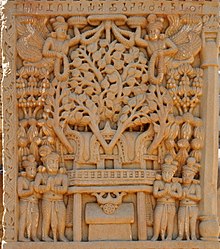Bodh Gaya
| ||||||||||||||||||||||||||||||||||||||||||||||
Read other articles:

Questa voce o sezione sull'argomento nobili tedeschi non cita le fonti necessarie o quelle presenti sono insufficienti. Puoi migliorare questa voce aggiungendo citazioni da fonti attendibili secondo le linee guida sull'uso delle fonti. Cristiano di Brandeburgo-BayreuthCristiano di Brandeburgo-Bayreuth ritratto da Heinrich BollandtMargravio di Brandeburgo-Bayreuth[1]Stemma In carica25 aprile 1603 –30 maggio 1655 PredecessoreGiorgio Federico di Brandeburgo-Ansbach SuccessoreCri…

Ivan Provedel Nazionalità Italia Altezza 194[1] cm Peso 84[2] kg Calcio Ruolo Portiere Squadra Lazio CarrieraGiovanili 2006-2008 Treviso2008-2009 Pordenone2009-2010 Liapiave2010-2012 Udinese2012-2013 ChievoSquadre di club1 2013-2014→ Pisa26 (-22)[3]2014-2015→ Perugia24 (-27)2015-2016→ Modena21 (-21)2016-2017→ Pro Vercelli40 (-39)2017-2019 Empoli39 (-69)2019-2020→ Juve Stabia18 (-35; 1)2020-…

Indian insurance aggregator This article reads like a press release or a news article and may be largely based on routine coverage. Please help improve this article and add independent sources. (March 2023) PolicybazaarCompany typePublicTraded asNSE: POLICYBZRBSE: 543390ISININE417T01026IndustryFinancial technologyInsuranceFoundedJuly 2008; 15 years ago (2008-07) in GurgaonFoundersYashish DahiyaAlok BansalAvaneesh NirjarHeadquartersPlot No. 119, Sector 44, Gurgaon…

Woodworking tool Winding sticks in use. In woodworking and carpentry, a pair of winding sticks is a tool that aids in viewing twist (also known as wind) in pieces of lumber by amplifying the defect.[1] Winding sticks can be as simple as any two straight sticks or they can be elegant, decorated, dimensionally stable wood like mahogany. A pair of framing squares may also be suitable. Traditionally they are 16 inches (41 cm)[1] to 30 inches (76 cm)[2] long, 1+3R…

1940 German attempt to capture Rotterdam This article relies largely or entirely on a single source. Relevant discussion may be found on the talk page. Please help improve this article by introducing citations to additional sources.Find sources: Battle of Rotterdam – news · newspapers · books · scholar · JSTOR (February 2010) Battle of RotterdamPart of the Battle of the NetherlandsWaalhaven – the airbase near Rotterdam burning during the German attackDa…

In this Spanish name, the first or paternal surname is Aycinena and the second or maternal family name is Piñol. Mariano de Aycinena y PiñolGovernor of the State of GuatemalaIn officeMarch 1, 1827 (1827-03-01) – April 12, 1829 (1829-04-12)Preceded byJosé Domingo EstradaSucceeded byFrancisco Morazán Personal detailsBorn(1789-09-16)16 September 1789Died29 March 1855(1855-03-29) (aged 65)Nueva Guatemala de la AsunciónAlma materReal y Pontif…

Cyan Engineering was an American computer engineering company located in Grass Valley, California.[1][2] It was founded by Steve Mayer and Larry Emmons. The company was purchased in 1973 by Atari, Inc. and developed the Atari Video Computer System console, which was released in 1977 and renamed the Atari 2600 in November 1982. It also carried out some robotics research and development work on behalf of Atari, including the Kermit mobile robot, originally intended as a stand-alone…

此條目可能包含不适用或被曲解的引用资料,部分内容的准确性无法被证實。 (2023年1月5日)请协助校核其中的错误以改善这篇条目。详情请参见条目的讨论页。 各国相关 主題列表 索引 国内生产总值 石油储量 国防预算 武装部队(军事) 官方语言 人口統計 人口密度 生育率 出生率 死亡率 自杀率 谋杀率 失业率 储蓄率 识字率 出口额 进口额 煤产量 发电量 监禁率 死刑 国债 外…

Article principal : Futurisme. Affiche d'El Lissitzky pour une production post-révolutionnaire du drame Victoire sur le soleil. La légende multilingue se lit comme suit : Tout est bien qui commence bien et n'est pas fini. Le futurisme russe est un mouvement de poètes et d'artistes russes qui ont adopté les principes du Manifeste du futurisme de Filippo Marinetti, qui préconisait le rejet du passé et une célébration de la vitesse, de la machinerie, de la violence, de la jeunesse…

「アプリケーション」はこの項目へ転送されています。英語の意味については「wikt:応用」、「wikt:application」をご覧ください。 この記事には複数の問題があります。改善やノートページでの議論にご協力ください。 出典がまったく示されていないか不十分です。内容に関する文献や情報源が必要です。(2018年4月) 古い情報を更新する必要があります。(2021年3月)出典�…

This article is about slavery from the founding of the United States in 1776. For the colonial period, see Slavery in the colonial history of the United States. For modern illegal slavery, see Human trafficking in the United States. For modern legal forced labor, see Penal labor in the United States. Peculiar institution redirects here. For the book, see The Peculiar Institution. See also: Abolitionism in the United States Whipping a slave (wood-engraving made 1834), Peter's scourged back (1863)…

يفتقر محتوى هذه المقالة إلى الاستشهاد بمصادر. فضلاً، ساهم في تطوير هذه المقالة من خلال إضافة مصادر موثوق بها. أي معلومات غير موثقة يمكن التشكيك بها وإزالتها. (يوليو 2017) راسينغ كلوب باي دو فونتينبلو تأسس عام 1912 البلد فرنسا الموقع الرسمي الموقع الرسمي تعديل مصدري - تعد…

1928 film by John G. Adolfi The Devil's SkipperAdvertisementDirected byJohn G. AdolfiWritten byHarry BraxtonRobert Dillon Jack NattefordViola Brothers ShoreBased onDemetrios Contosby Jack LondonProduced byJohn M. StahlRoy FitzroyStarringBelle BennettMontagu LoveGino CorradoCinematographyErnest MillerEdited byDesmond O'BrienProductioncompanyTiffany PicturesDistributed byTiffany PicturesRelease date February 1, 1928 (1928-02-01) Running time60 minutesCountryUnited StatesLanguageSile…
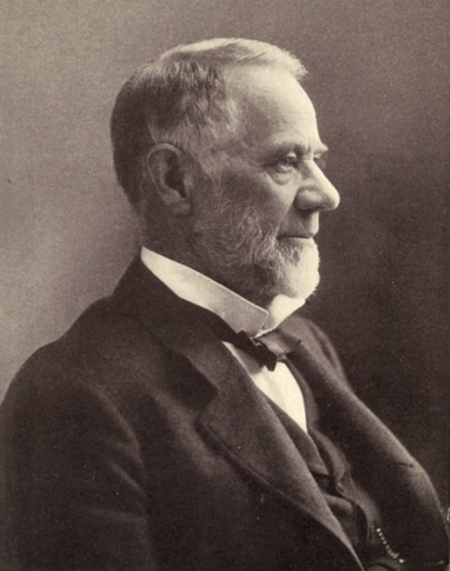
American presidential nominating convention 1904 Democratic National Convention1904 presidential election Nominees Parker and DavisConventionDate(s)July 6–10, 1904CitySt. Louis, MissouriVenueSt. Louis Exposition and Music HallCandidatesPresidential nomineeAlton B. Parker of New YorkVice presidential nomineeHenry G. Davis of West Virginia‹ 1900 · 1908 › Opening session of the convention The 1904 Democratic National Convention was an American presidential nominating conv…
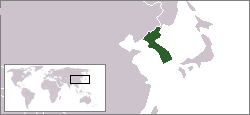
شبه جزيرة كوريامعلومات عامةجزء من كوريا الاسم الأصل 한국 (بالكورية) البلد كوريا الشماليةكوريا الجنوبية موجود بالقرب من المسطح المائي المحيط الهادئبحر الصين الشرقيالبحر الأصفر الإحداثيات 37°30′N 127°00′E / 37.5°N 127°E / 37.5; 127 أعلى قمة جبل بايكتو المساحة 85٬270 ميل مربع تعد…
Movimiento Nacional para la Estabilidad y el ProgresoНационално движение за стабилност и възходNacionalno dviženie za stabilnost i vǎzhod Líder Stanimir IlchevFundación 6 de abril de 2001Ideología Liberalismo Conservadurismo liberal PopulismoPosición Centro a CentroderechaSede Sofía, BulgariaPaís Bulgaria BulgariaColores AmarilloAfiliación internacional Internacional LiberalAfiliación europea ALDESitio web [1][edit…

Pour les articles homonymes, voir Peel. Arthur Peel Fonctions Président de la Chambre des communes du Royaume-Uni 26 février 1884 – 8 avril 1895(11 ans, 1 mois et 13 jours) Monarque Victoria Prédécesseur Henry Brand Successeur William Gully Député à la Chambre des communes 13 juillet 1865 – 23 mai 1895(29 ans, 10 mois et 10 jours) Circonscription Warwick (1865-1885)Warwick et Leamington (1885-1895) Biographie Date de naissance 3 août 1829 Date de décès…

Music festival in London This article has multiple issues. Please help improve it or discuss these issues on the talk page. (Learn how and when to remove these template messages) This article contains content that is written like an advertisement. Please help improve it by removing promotional content and inappropriate external links, and by adding encyclopedic content written from a neutral point of view. (August 2018) (Learn how and when to remove this message) This article may rely excessivel…

هذه المقالة يتيمة إذ تصل إليها مقالات أخرى قليلة جدًا. فضلًا، ساعد بإضافة وصلة إليها في مقالات متعلقة بها. (يناير 2016) عبد الله المطوع معلومات شخصية تاريخ الميلاد 24 يناير 1985 (العمر 39 سنة) مركز اللعب مهاجم الجنسية الكويت المسيرة الاحترافية1 سنوات فريق م. (هـ.) 1 عدد مرات الظهور �…

For the Jewish self-defense organization, see Bar-Giora (organization). Place in Jerusalem, IsraelBar Giora בר גיוראبار جيوراBar GioraCoordinates: 31°43′46″N 35°4′20″E / 31.72944°N 35.07222°E / 31.72944; 35.07222CountryIsraelDistrictJerusalemCouncilMateh YehudaAffiliationMishkei Herut BeitarFounded18 October 1950Founded byYemenite JewsPopulation (2022)[1]725 Bar Giora (Hebrew: בַּר גִּיּוֹרָא) is a moshav in the Judean…
